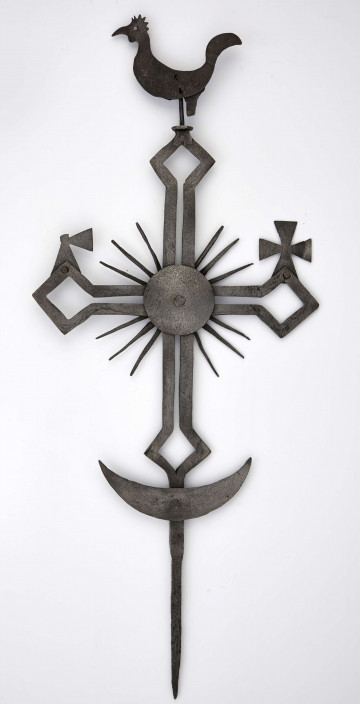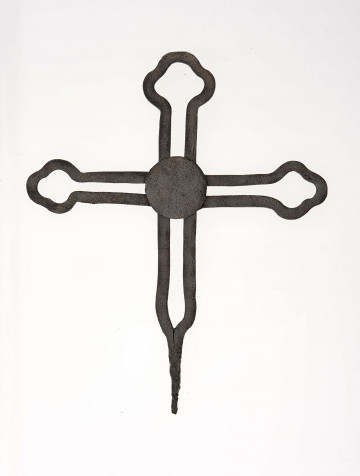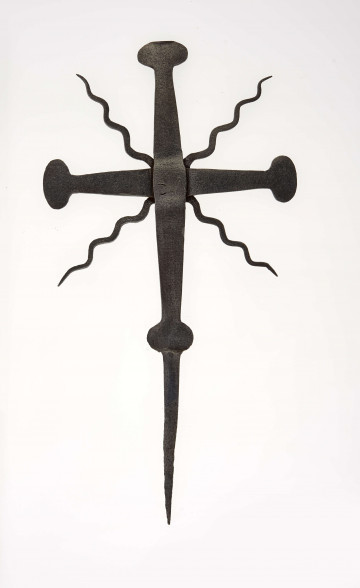
Cross with cock and crescent
1848
National Museum in Lublin
Part of the collection: Folk craft of the Lublin Region (19th/20th c.)
Roadside wooden crosses, common in the Polish countryside, were sometimes additionally decorated with smith-made items such as small iron crosses with a crescent and/or a cockerel (see E/16369/ML). It was probably believed that these elements had a magical function and protected against evil forces. The figure of the cockerel took a realistic form or was stylistically simplified.
The rooster, symbolising the arrival of daylight, has since ancient times signified vigilance and the overcoming of darkness. With its fiery red crest and shining feathers, and also because it crowed at dawn, it was associated with fire and the sun and the coming of spring, thus also symbolising vitality, fertility and fecundity.
In Scripture, the cock crowed during St Peter's denial, and was therefore associated with the symbolism of Christ's Passion. The rooster crowing in the morning heralded the day, so it was also attributed with the symbol of resurrection and the announcement of Christ's coming again after the Last Judgement. For this reason, it was often placed on top of church towers from the 9th century onwards. At the time, it was believed to protect against hail, lightning and demons.
According to folk beliefs, it was the first bird to announce the birth of Christ, which is why it was able to crow throughout Christmas night. It was also believed that the cock crowing at dawn dispels the darkness of the night and wards off evil spirits – it was attributed with the role of warning against evil and danger. It was considered an apotrope and was placed on objects as an amulet. Sharp talons or feathers could also provide magical protection.
In the folk culture of the Lublin region, a rooster was placed not only on the surface or on the top of roadside crosses, but also on the roofs of cottages as pinnacles or wind indicators. It also appeared as a smith motif and in cut-outs (see: E/433/ML), on Easter eggs (see: E/1137/ML) or ceramics, mainly from pottery centres in Łążek (the Janów Lubelski region) and Baranów (the Puławy region).
Author / creator
Dimensions
cały obiekt: height: 27 cm, width: 22 cm
Object type
decorative item
Technique
forging
Material
iron
Creation time / dating
Creation / finding place
Owner
The National Museum in Lublin
Identification number
Location / status

1848
National Museum in Lublin

1901 — 1920
National Museum in Lublin

1890 — 1910
National Museum in Lublin
DISCOVER this TOPIC
Museum of King Jan III's Palace at Wilanów
DISCOVER this PATH
Educational path